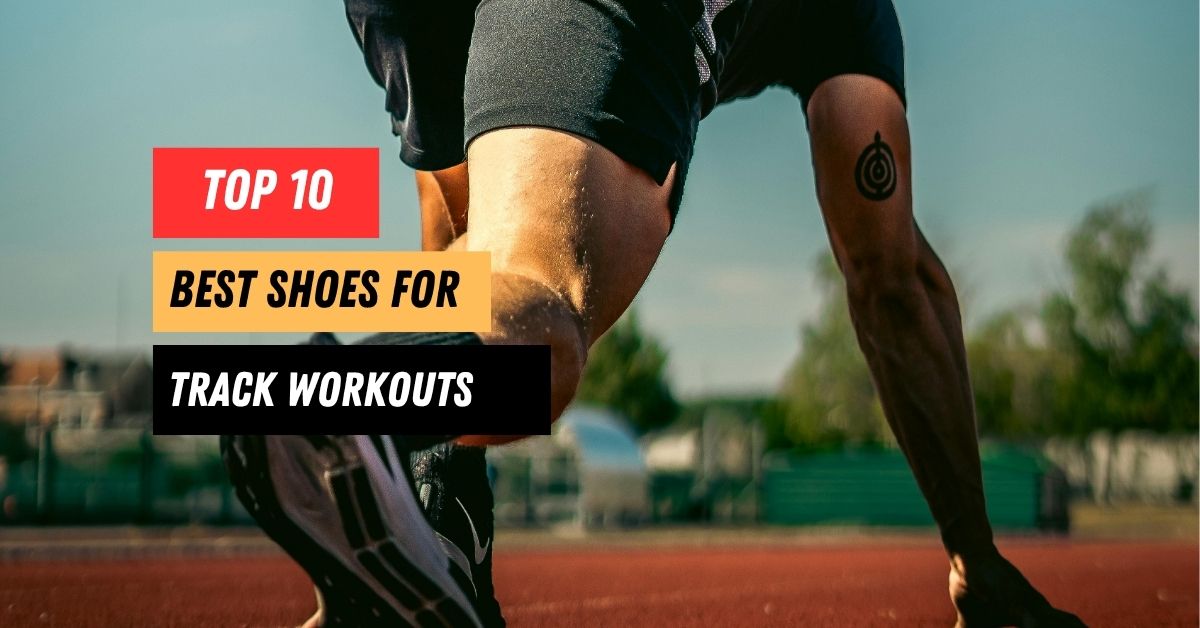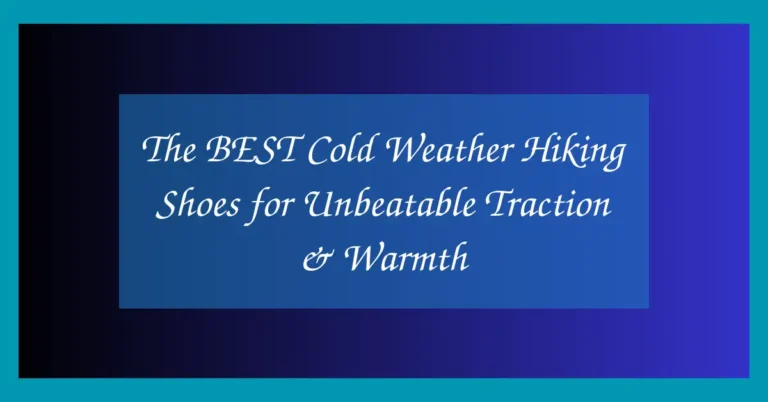The 10 Best Shoes for Track Workouts
When it comes to track workouts, the importance of selecting the right shoes cannot be overstated. Proper footwear is essential not only for achieving optimal performance but also for preventing injuries. Track athletes require shoes that can handle the rigorous demands of quick sprints, long runs, and everything in between. The right pair of shoes enhances traction on track surfaces, supports the foot during high-impact activities, and promotes efficient movement.
Therefore, choosing the best shoes for track workouts is crucial for athletes who want to perform at their best while minimizing the risk of injuries. This article will guide you through selecting the ideal footwear to help you excel in your track activities safely and effectively.
Top 10 Shoe Reviews for Track Workouts
In the world of track and field, the right shoes can be a game-changer. Below, we delve into detailed reviews of the top five shoes suitable for track workouts, covering various aspects such as performance, comfort, and durability.
1. Nike ZoomX Dragonfly
The Nike ZoomX Dragonfly is a favorite among track athletes, especially designed for distance events. Its innovative ZoomX foam provides exceptional energy return and cushioning, making it ideal for both training and competition. The shoe’s lightweight mesh upper ensures breathability, keeping feet cool during intense sessions. The outsole features strategically placed spikes that optimize traction and speed, enhancing your ability to power through each stride.
The design is sleek and focused on maximizing efficiency, which is evident in its minimalistic yet functional construction. Furthermore, Nike’s attention to ergonomic design means the shoe molds well to a variety of foot shapes, offering a snug, yet comfortable fit that supports natural foot movements.
Pros
- Exceptional energy return from ZoomX foam
- Lightweight and breathable mesh upper
- Optimized traction with strategically placed spikes
- Ergonomic design fits a variety of foot shapes
- Suitable for both training and competitive events
Cons
- High price point
- Limited color options
- Spikes may not be suitable for all track surfaces
2. Adidas Adizero Avanti
Adidas Adizero Avanti is crafted for speed and distance, with a focus on lightweight performance. This shoe incorporates Boost technology, providing a responsive and energetic feel underfoot, which is crucial for middle-distance events. The breathable mesh upper and comfortable textile lining ensure that the foot remains cool and dry, even on hotter days.
The four-spike forefoot configuration delivers excellent grip and propulsion on the track, which can significantly improve your control and speed during races. Its sleek design and bold colorways also stand out aesthetically. The Adizero Avanti also features a reinforced toe cap, which adds durability and protects the toes during longer races.
Pros
- Responsive Boost midsole cushioning
- Lightweight, breathable mesh upper
- Excellent grip with four-spike configuration
- Aesthetically pleasing design
- Reinforced toe cap for added durability
Cons
- May feel narrow for athletes with wider feet
- Spikes are fixed and not customizable
- Primarily suited for middle to long-distance, less versatile for sprints
3. Brooks Wire v6
The Brooks Wire v6 is engineered for racers who demand a balance of flexibility and support. This shoe features a lightweight construction and a minimalistic design that prioritizes speed without sacrificing comfort. Its Pebax Rnew spike plate provides robust traction while also promoting a more environmentally friendly approach using sustainable materials.
The midsole offers a moderate level of cushioning, which is tailored for track athletes who need responsiveness over cushion. The upper is constructed from woven fabric that adapts to the foot for a glove-like fit, ensuring maximum security and minimal slippage during critical moments of a race.
Pros
- Ultra-lightweight design enhances speed
- Pebax Rnew spike plate for durable traction
- Environmentally friendly materials
- Adaptive woven upper for a snug fit
- Balanced cushioning for responsiveness
Cons
- Limited cushioning may not suit all runners
- Less protection against impacts
- Minimalist design might not appeal to all users
4. Saucony Ballista 2
Saucony Ballista 2 is designed for sprinters who need explosive power and speed. This shoe features a full-length Pebax spike plate that optimizes flexibility and traction, crucial for quick starts and high-speed sprints. The upper is made of a lightweight mesh with FlexFilm overlays, which provide support and durability without adding bulk.
The SSL (Saucony Super Lite) EVA midsole delivers excellent rebound and durability, maintaining lightness and efficiency. The Ballista 2’s design emphasizes a secure fit that locks the foot in place, reducing the risk of slipping during explosive movements.
Pros
- Full-length Pebax plate for optimal traction
- Lightweight mesh with supportive FlexFilm overlays
- Responsive SSL EVA midsole
- Secure fit to prevent slipping
- Specifically designed for sprinters
Cons
- Not suitable for distance races
- Limited color options
- Can be too stiff for some users
5. Asics Hyper LD 5
The Asics Hyper LD 5 is a versatile track shoe that’s well-suited for multi-event athletes, offering a good blend of speed, cushion, and support. It features a full-length EVA midsole that provides cushioning and bounce-back, enhancing comfort during longer competitions. The upper is constructed from a combination of mesh and synthetic materials, ensuring breathability while also supporting the foot securely.
Its rubber outsole includes a traditional spike plate with five pins, offering solid traction across various track conditions. The Hyper LD 5 stands out for its durability and comfort, making it an excellent choice for athletes participating in multiple track events.
Pros
- Versatile design suitable for multiple track events
- Full-length EVA midsole for enhanced cushioning
- Breathable mesh and synthetic upper
- Durable rubber outsole with traditional spike plate
- Excellent comfort and support
Cons
- May lack the specialized performance of sprint- or distance-specific shoes
- Heavier than some competitors
- Some users report sizing inconsistencies
6. Nike Air Zoom Victory
The Nike Air Zoom Victory combines advanced technology and comfort, making it an excellent choice for middle-distance runners. The shoe features Nike’s innovative Zoom Air unit in the forefoot, providing responsive cushioning that propels athletes forward with each stride. The upper is crafted from a lightweight, breathable mesh that keeps the feet cool under pressure.
The unique lacing system secures the foot in place, reducing any unwanted movement. Additionally, the minimalistic spike plate aligns with key foot zones, enhancing traction and efficiency without excess weight. This shoe is built to deliver peak performance while ensuring comfort and durability over the long haul.
Pros
- Responsive Zoom Air cushioning
- Lightweight and breathable mesh upper
- Secure lacing system
- Efficient, targeted spike placement
- Ideal for middle-distance races
Cons
- Premium price point
- Limited use outside of track events
- May not provide enough support for longer distances
7. Adidas Distancestar
Adidas Distancestar is tailored for athletes who need a reliable, all-around performer on the track. This shoe features a breathable mesh upper with synthetic overlays that provide essential support without compromising flexibility. The EVA midsole offers long-lasting cushioning, making it suitable for a variety of distances.
Its spike plate includes five removable spikes for adaptable traction, suitable for various track conditions. The Distancestar stands out for its lightweight design and affordability, making it accessible for beginners and experienced runners alike. Its durability is further enhanced by the ADIWEAR outsole, which resists wear in high-impact areas.
Pros
- Versatile for multiple distances
- Lightweight and supportive design
- Affordable price point
- Durable ADIWEAR outsole
- Removable spikes for custom traction
Cons
- Cushioning may be too basic for some preferences
- Synthetic overlays could reduce breathability
- Primarily designed for track use
8. New Balance MD500v7
The New Balance MD500v7 is a versatile spike that offers a balance of speed, comfort, and versatility, ideal for multi-event track athletes. The shoe features a new, lighter mesh upper that enhances breathability without sacrificing support. The REVlite midsole provides responsive cushioning with minimal bulk, ideal for events ranging from sprints to mid-distance runs.
Its six-spike configuration offers excellent traction, helping athletes maintain control and speed during critical phases of their races. The MD500v7’s design is practical yet stylish, available in several color options to suit various tastes.
Pros
- Lightweight and breathable mesh upper
- Responsive REVlite midsole
- Suitable for sprints to mid-distances
- Six-spike configuration for superior traction
- Stylish design with multiple color options
Cons
- May not be cushioned enough for long-distance runners
- Spikes need to be handled carefully to avoid wear
- Fit might be narrow for some users
9. Saucony Kilkenny XC7
Saucony Kilkenny XC7 is designed for cross-country and off-track surfaces but performs admirably on standard tracks as well. It combines a lightweight upper with a comfortable, secure fit, making it ideal for athletes who encounter varied surfaces. The four-spike plate provides sufficient traction for most track conditions, while the compression-molded EVA midsole delivers reliable cushioning throughout the race.
The shoe’s mesh upper is reinforced with synthetic overlays for added durability and midfoot support. The Kilkenny XC7 is celebrated for its comfort and versatility, making it a favorite among high school and collegiate athletes.
Pros
- Excellent for cross-country and track
- Lightweight, durable upper design
- Secure, comfortable fit
- Affordable and offers great value
- Adequate traction for varied surfaces
Cons
- Limited spike count compared to other track shoes
- Less specialized than other racing spikes
- Cushioning may be minimal for some athletes
10. Asics Metaracer
The Asics Metaracer is at the forefront of technology with its GUIDESOLE technology, designed to reduce energy loss at the ankle joint for more efficient running. The shoe incorporates a carbon plate in the midsole, enhancing propulsion and giving a competitive edge in speed-focused events. Its engineered mesh upper is extremely breathable and features a hydrophobic coating to reduce moisture build-up.
The Asics Grip outsole provides robust traction on both wet and dry surfaces, ensuring reliable performance under various conditions. The Metaracer’s sleek design and high-tech features make it a top choice for serious competitors looking to shave seconds off their times.
Pros
- GUIDESOLE technology reduces energy loss
- Carbon plate for enhanced propulsion
- Breathable, hydrophobic mesh upper
- Excellent traction on multiple surfaces
- High-tech, performance-oriented design
Cons
- High cost might deter some buyers
- Specific engineering for speed may not suit longer distances
- Hydrophobic feature less useful in typical dry track conditions
Buyer’s Guide
Selecting the best shoes for track workouts involves considering several key factors that contribute to the durability, grip, comfort, and material quality of the footwear. Understanding these aspects can help you make an informed decision and choose a pair of shoes that best suits your track needs.
Durability
Track shoes face a lot of wear and tear, especially during intense workouts. It is essential to choose shoes that are built to last. Look for shoes with high-quality materials and robust construction. The outsole, which frequently contacts the track, should be made of durable rubber with a design that withstands repeated use on rough surfaces. Reinforced stitching and secure bonding between the sole and the upper part of the shoe also contribute to a longer-lasting shoe.
Grip
The grip of a track shoe is crucial for providing stability and support during rapid changes in direction and speed. Shoes designed for track workouts often feature specialized spike plates that offer enhanced traction on track surfaces. These spikes should be appropriate for the type of track you will be using and the specific events you participate in. For general training, look for shoes with a well-designed tread pattern that offers grip without excessive spikes, which can be uncomfortable during longer sessions.
Comfort
Comfort is paramount, as uncomfortable shoes can distract you from your workout and even cause injuries. Track shoes should have a snug fit that prevents unnecessary movement inside the shoe while allowing for natural foot expansion during runs. Breathable materials like mesh fabrics help keep feet cool and dry, reducing the risk of blisters and discomfort. Additionally, adequate cushioning absorbs impact, especially vital for longer distance runners who require more foot support.
Material
The materials used in track shoes should offer a balance between durability, breathability, and lightweight. Synthetic fabrics are commonly used for their ability to provide support and breathability while remaining light. Leather might be durable but often lacks the necessary breathability and flexibility. Moreover, innovative materials like knit fabrics can offer an adaptive fit, enhancing comfort and performance.
When selecting track shoes, also consider the specific requirements of your track events. Sprinters might prefer lightweight shoes with minimal cushioning and maximum responsiveness, whereas distance runners might benefit from shoes with more cushion and support. It is also advisable to try on shoes later in the day when your feet are more swollen to get a better sense of fit and comfort during actual track conditions.
FAQ
1. What type of spikes are best for track workouts?
The best type of spikes for your track shoes largely depends on your specific event. Sprint spikes are generally stiffer and have minimal cushioning to maximize power and speed. Distance spikes, on the other hand, have more cushioning and flexibility to provide comfort and endurance support. For general training, pyramid spikes about 1/4 inch long offer good traction without being too aggressive for multi-use.
2. How often should I replace my track shoes?
Track shoes should be replaced after about 300 to 500 miles of use, or if you notice significant wear on the soles or any tearing in the material. Consistently using worn-out shoes can lead to injuries and decreased performance.
3. Can I use regular running shoes on a track?
While regular running shoes can be used on a track, they may not provide the same level of performance and protection as track-specific shoes. Track shoes are specifically designed to offer better grip and support on track surfaces, which can enhance your performance and reduce injury risk.
4. How should track shoes fit?
Track shoes should fit snugly without causing discomfort. There should be about a thumb’s width of space between the front of the shoe and your longest toe to accommodate foot expansion during runs. Ensure the heel does not slip and that there is no pinching at the toes.
5. What features should I look for in track shoes for hurdling?
For hurdling, look for shoes that provide a good balance of flexibility, support, and traction. A slightly cushioned shoe can help absorb impact as you land from hurdles, while a flexible forefoot allows for efficient toe-off.
6. Is it better to choose lighter shoes for track workouts?
Lighter shoes can improve your speed and agility on the track, which is particularly beneficial for sprinters. However, ensure that the shoes still offer adequate support and cushioning as needed for your specific track events.
7. Are there any specific brands that are recommended for track shoes?
Several brands are well-regarded for their track shoes, including Nike, Adidas, and Asics. These brands offer various models that cater to different types of track events and personal preferences. It’s best to try different brands and styles to see what works best for your feet and track activities.
Conclusion
Selecting the right footwear for track workouts is paramount, not only for achieving optimal performance but also for ensuring safety. The shoes reviewed here offer a range of features designed to meet the needs of different track athletes, emphasizing the importance of traction, support, and comfort. Each model provides unique benefits, enabling athletes to choose footwear that best suits their specific event requirements and personal preferences.







